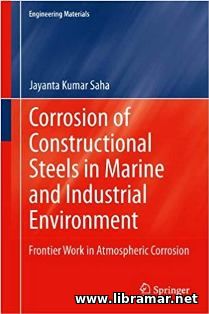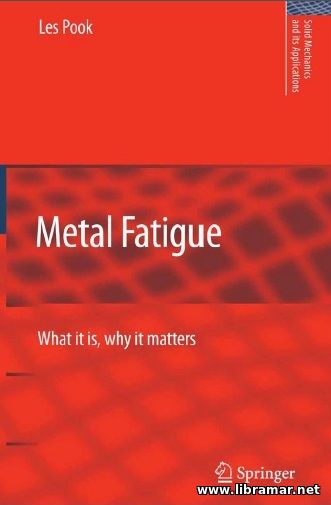 This nice and comprehensive title is specifically intended to clearly describe the matters relating to the NDE, standing for the non-destructive evaluation, and commonly associated with the real-life applications of the NDE methods, detailing both existing, i.e. conventional plus also the forthcoming techniques of such evaluation. Through the content of his work, the author is instructing readers on the current practices, commonly used techniques and equipment in use, together with the limitations and future potentials of the existing methods of evaluation.
Each chapters is detailing a particular NDE method, providing a comprehensive technical overview and clear explanation of the basic physical laws that are governing this method, covering also the inspection techniques. The authors are also discussing some historical background of each of the methods covered. The equations used for calculating have also been dealt with. It is a really perfect source of reference info for people willing to get better understanding of the techniques.
The book shall be equally useful for the students and specialists since the information is presented in a very simple and clear language; the authors have managed to prepare an excellent blend of the fundamental and advanced information addressing the most popular non-destructive testing.
 We all know that the mild steel considered prime construction material in many fields is seriously prone to corrosion when exposed to the marine and industrial environments where the harmful pollutants exist. These problems are even more severe in tropical countries. One of the ways to improve the corrosion resistance of the steel is weathering steel. The present publication will shed some light on the corrosion problem.
It starts with the general theoretical information on rusting of iron and corrosion of steels, atmospheric corrosion and degradation of the organic coatings, rust characterization etc. The next chapter tells readers about practical approach to this problem including various tests, while the third chapter is devoted to the experimental evidence covering corrosion rate and rust appearance, controlled lab tests etc.
The final part of the volume is dealing with the field exposure test. Some additional data is provided in the appendix to the main body of the volume. Needless to say that the content of this book will be useful to anyone engaged in design and construction of the marine vessels and other floating constructions; however, it may be equally useful to the construction engineers employed in the industrial sector.
 Materials are and have always been considered one of the most critical elements since they support a wide variety of technological fields. The content of the present book was summarized on the basis of the results of the research activities and laboratory works, and it is actually forming a basic principle of laboratory work.
That is why this publication is expected to be suitable to the graduate students; however, it will definitely be of equal importance and use for the undergraduate students as well as the researchers and practicing engineers working in the fields of mechanics and materials. The material contained in each of the parts has been edited base on the technical review papers by the author.
The first chapter provides some general introduction to materials. The second chapter will tell the readers about the main technical concepts of the fracture mechanics, while the third chapter describes the main principles of toughness and strength of materials. The remaining chapters of the volume cover the steels, alloys, intermetallic compounds, cast iron, polymers and ceramic materials, titanium, aluminum, metal matrix composites and many other important and relevant topics.
 This is new sixth edition of one of the most respected books written by the recognized industry specialist. The book addresses the most widely used joining techniques as applied to the construction materials. The volume is mainly aimed at the students of metallurgy and will also be useful to the specialists taking welding courses. Note that is a great reference source for the engineers directly engaged in the joining processes.
The author has covered all changes taking place when welding together with the types and properties of the welding joints, possible defects and behavior of the weld seams in active service. The newly introduced metal-ceramic welding is dealt with in a separate chapter. Also, the friction stir welding, adhesive bonding, quality control and production technology have been paid particular attention in this new edition.
The chapter dealing with the heat flow has been thoroughly revised, updated, and supplemented with the additional examples. In addition to that, the book now features perfect and comprehensive coverage of the non-destructive evaluation of the welding seams, as well as the major structural features that led to the ship catastrophes.
 The publication starts with the introductory information followed by the historical background of the metal fatigue factor including the experimental works, standardization, fracture mechanics, implementation of the computers and servo-hydraulic testing appliances. The next chapter addresses the constant amplitude metal fatigue, including the fatigue mechanisms, ratcheting, S/N curves etc.
This one is followed by the chapter dedicated to the variable amplitude and multi-axial metal fatigue, including the math description, Miner's rule, standard load histories and other relevant information. The fifth chapter is dealing with the fatigue design, covering the failure analysis, approaches and situations, product liability and associated safety regulations. The next chapter addresses the uncracked situation, including the surface finish and mean stress effects, effects of notches, fatigue life improvement etc., while the following chapter addresses the cracked situation including the initial and final crack sizes, crack propagation, interaction effects, fractography and other important factors.
The remaining chapters of the book are dedicated to the fatigue crack paths, researches and development in the field, current industry trends, avoidance of the failures etc. Three appendices provide the information about the fracture mechanics, non-destructive tests, and random load theory.
 A vessel at open sea fully depends on the professional knowledge, technical skills and also self-reliance of the crew members carrying out required maintenance and repair works. Among the other important technical skills that are considered necessary, we would mention the modern welding techniques.
The ultimate purpose of the present training handbook prepared by the specialists of the Unitor Company specifically for the maritime welders was to provide the welders engaged in different ship building and ship repair works with the useful source of practical knowledge covering the right solutions to the specific problems of the welding. The document opens with the quick introduction and guidance to the welding processes.
The process of welding and other related thermal processes are using compressed either compressed gas or electricity to get a concentrated heat source melting or burning away steel and other construction materials. All necessary safety precautions are required to be in place and followed in order to avoid any possible accidents relating to the supply of gas/electric power, sparks and fumes etc.
In the most countries, the regulations and guidelines relating to the welding and any other hot works together with their applications onboard vessels, are laid down by the authorities.
 The book will serve as an excellent general source of technical knowledge related to the joining of materials by means of welding. The coverage of the material is really impressive. the author is encompassing the welding metallurgy together with the weld pool chemistry and welding physics in detail. in the meantime he does not go too deep to the thorough descriptions that would be too difficult for the people with little experience in the field.
In fact, most of the welding related publications available today are only dealing with the basic welding techniques and principles leaving the science out, or vice versa. In this book the welding expert is taking a sort of integrated approach; this has eventually resulted in the content of his work being comprehensive and covering all aspects, providing self-contained treatment of welding together with the physics of the process and underlying principles.
The book is a real classic textbook and a must-have standard reference. There are hundreds of informative illustrations and data tables included by the author to supplement the main text of the book, correlating the science of welding with the currently used welding practices. Absolutely recommended to the practicing and future welders.
 The present training booklet has been specifically designed by Videotel company with the intention to provide the crew members and all other people dealing with the use of the abrasive wheels with all necessary information and safety precautions to be taken.
The book starts with the short introduction followed with the practical tips for the storage and maintenance of subject equipment, and keeping the wheels in good operational and working condition - starting from making the right choice when selecting the wheel and checking the markings on the wheel and manufacturer's code.
The next chapter is dedicated to the actual use of the wheels, starting from the preparation of the wheels for work an checking their condition and fitness, through mounting the wheel onto portable and static machines, basic safety matters and equipment used for provision of the safe work, safety precautions to take and safety measures to be implemented and followed to make the work safe, and also main do's and don'ts to be considered when using the portable machines.
Then there is a summary of the information provided in the booklet and several question for assessment of your understanding. Appendices contained in the last section of the booklet provide the legislation-related information, useful case studies and further resources to check.
|







